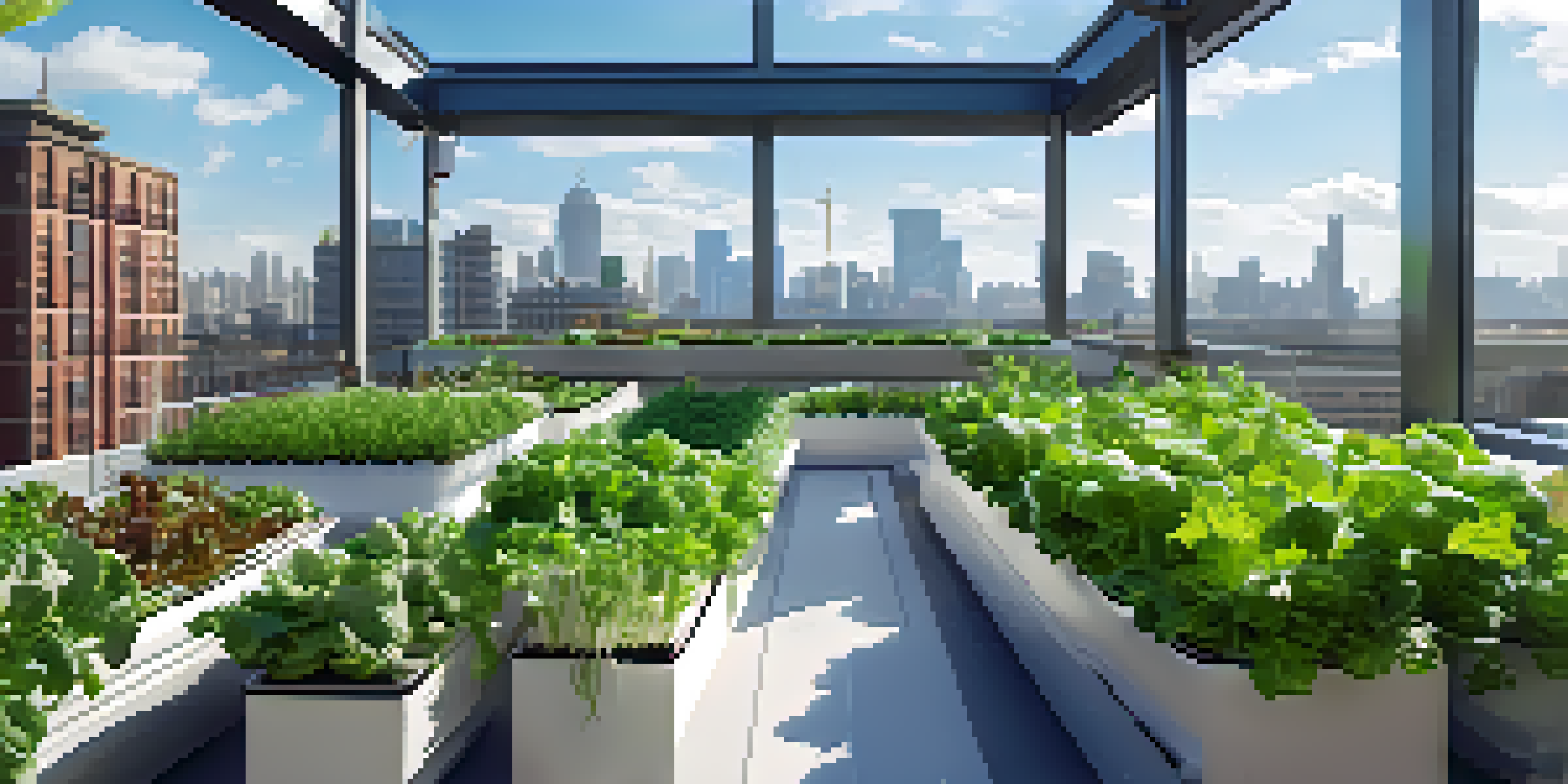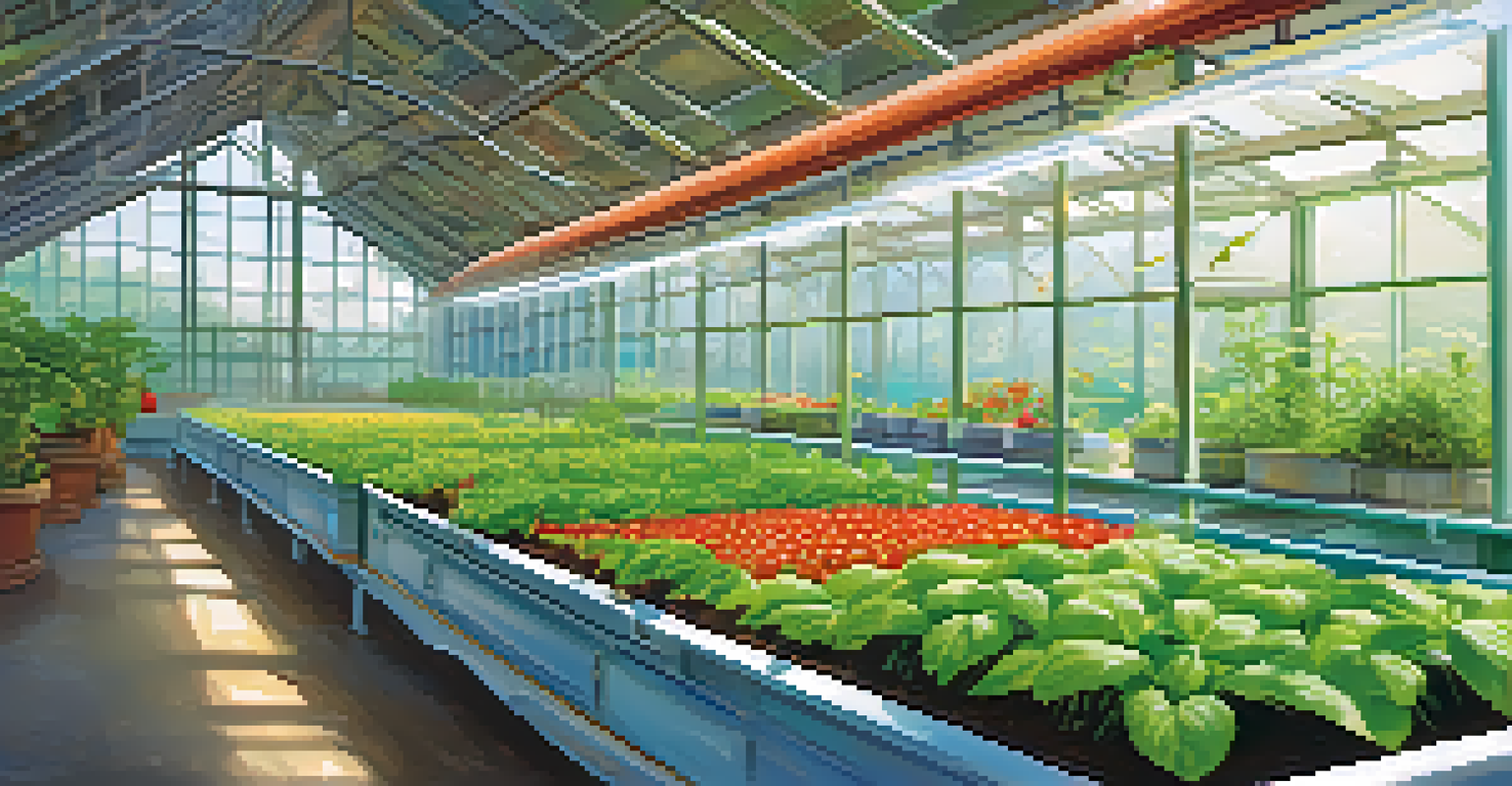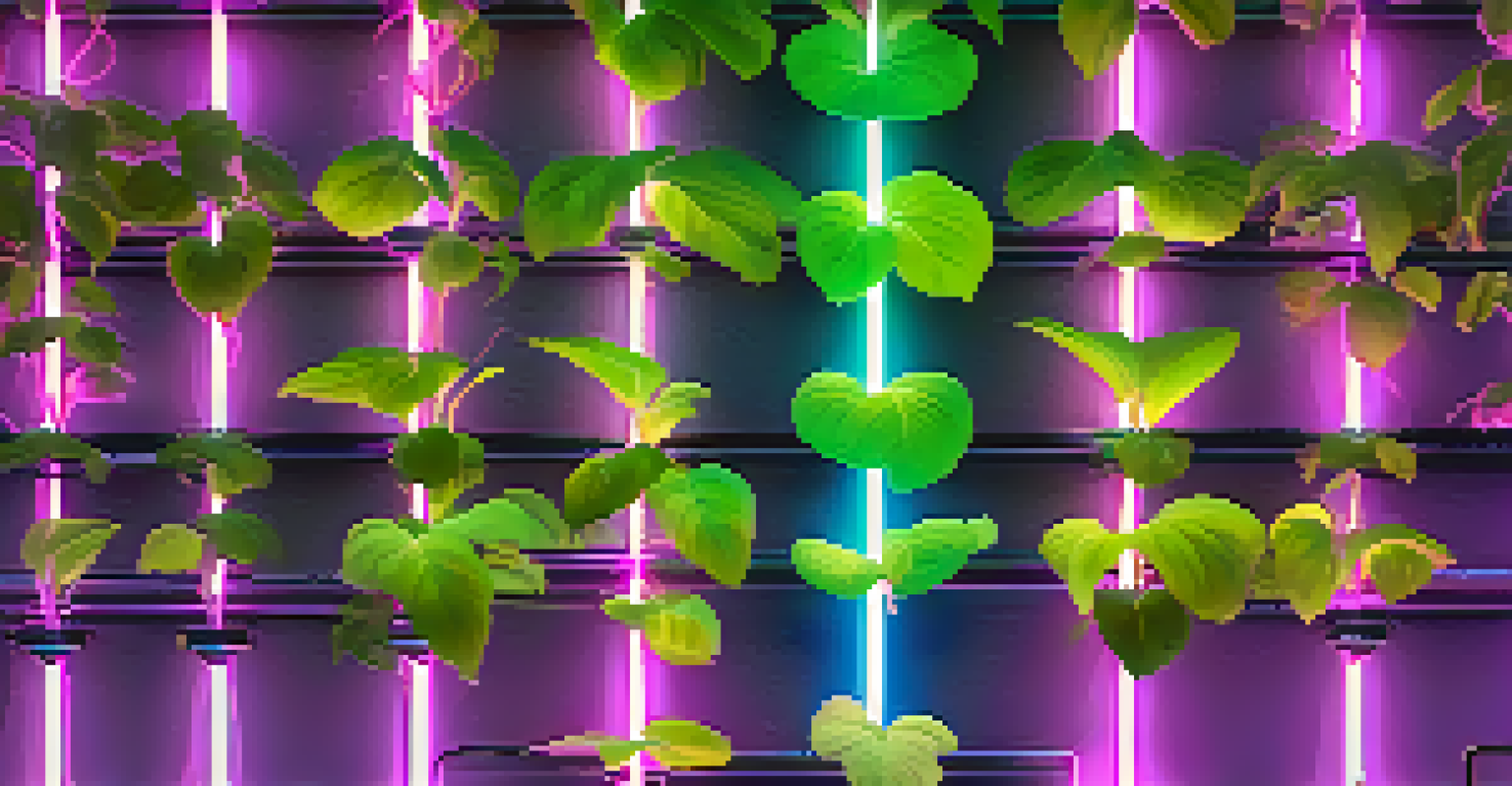Hydroponics and Aquaponics: The Future of Sustainable Farming

Understanding Hydroponics: Growing Without Soil
Hydroponics is a method of growing plants without soil, using nutrient-rich water instead. This innovative approach allows for faster growth and higher yields, making it an attractive option for modern agriculture. By controlling the growing environment, farmers can optimize plant health and production, reducing dependency on traditional farming methods.
The greatest threat to our planet is the belief that someone else will save it.
Imagine a world where fresh vegetables are grown in urban rooftops or inside warehouses, free from pests and diseases. In hydroponics, plants are suspended in a nutrient solution, directly absorbing what they need. This method not only conserves water but also eliminates the need for harmful pesticides, making it a sustainable choice for future food production.
As urbanization increases and arable land decreases, hydroponics presents a viable solution to food security. With its ability to produce crops in limited spaces, this technique is perfect for cities where land is at a premium. By harnessing technology and innovation, hydroponics could become a staple in the fight against global hunger.
Aquaponics: A Symbiotic Relationship for Growth
Aquaponics combines aquaculture (raising fish) and hydroponics, creating a mutually beneficial ecosystem. In this system, fish waste provides organic nutrients for plants, while the plants help filter and clean the water for the fish. This closed-loop system minimizes waste and maximizes efficiency, making it an exciting option for sustainable farming.

Picture a thriving garden where tomatoes and herbs grow alongside fish, all in harmony. This innovative method not only produces fresh food but also promotes biodiversity. By integrating fish farming with plant cultivation, aquaponics offers a sustainable way to grow food while conserving resources and reducing environmental impact.
Hydroponics Maximizes Crop Yields
This innovative method allows for faster plant growth and higher yields while conserving water and eliminating harmful pesticides.
The benefits of aquaponics extend beyond just food production; it also teaches us about sustainable practices and environmental stewardship. As more people become aware of the ecological challenges we face, aquaponics serves as a model for responsible farming. With its potential to produce healthy food while nourishing the planet, aquaponics is indeed a glimpse into the future.
Benefits of Hydroponics and Aquaponics
Both hydroponics and aquaponics offer numerous benefits that conventional farming simply can't match. For starters, they use significantly less water, making them ideal for areas experiencing drought or water scarcity. Additionally, these methods can be implemented in urban settings, bringing fresh produce closer to consumers and reducing transportation emissions.
Sustainability is no longer about doing less harm. It's about doing more good.
Moreover, hydroponic and aquaponic systems can produce crops year-round, free from seasonal limitations. This consistency in supply helps stabilize food prices and ensures that communities have access to fresh produce regardless of weather conditions. With climate change posing increasing threats to traditional agriculture, these methods are becoming more essential than ever.
Lastly, both systems can lead to healthier produce. Since they rely on controlled environments, the risk of pesticides and herbicides is dramatically reduced. Consumers can enjoy fresher, tastier foods while supporting sustainable practices that protect our environment.
Challenges Facing Hydroponics and Aquaponics
While hydroponics and aquaponics offer exciting possibilities, they are not without their challenges. One significant hurdle is the initial setup cost, which can be prohibitively high for small-scale farmers or hobbyists. Investments in technology, infrastructure, and equipment are necessary to establish these systems, potentially deterring some from making the switch.
Additionally, both methods require a solid understanding of water chemistry and plant biology. Without proper knowledge, growers risk crop failure or poor yields. This learning curve can be daunting for newcomers, emphasizing the need for education and training in these innovative farming techniques.
Aquaponics Creates Sustainable Ecosystems
By combining fish farming with plant cultivation, aquaponics promotes biodiversity and reduces waste in food production.
Lastly, reliance on technology can pose a risk. Systems that depend heavily on electricity and automated processes can be vulnerable to power outages or equipment malfunctions. Ensuring reliability and developing backup systems are essential to mitigate these risks and maintain productivity.
The Role of Technology in Sustainable Farming
Technology plays a crucial role in the success of hydroponics and aquaponics. Innovations such as automated nutrient delivery systems, pH monitoring, and climate control allow growers to optimize their operations. These advancements not only enhance productivity but also reduce labor costs and minimize human error in the growing process.
Furthermore, data analytics and IoT (Internet of Things) are revolutionizing how we approach farming. By collecting and analyzing data, farmers can make informed decisions about their crops, leading to improved outcomes. This data-driven approach enables more precise control over growing conditions, resulting in healthier plants and higher yields.
As technology continues to evolve, the potential for hydroponics and aquaponics will only expand. From vertical farming systems in urban centers to advanced monitoring solutions in rural areas, these innovations will help shape the future of sustainable agriculture. Embracing technology is essential for meeting the challenges of food production in an increasingly complex world.
Making Hydroponics and Aquaponics Accessible
To truly harness the potential of hydroponics and aquaponics, we must focus on accessibility. Creating community gardens or educational programs can help introduce these methods to more people. By empowering local communities with knowledge and resources, we can foster a new generation of sustainable farmers.
Moreover, government subsidies and support can encourage more farmers to adopt these practices. Financial assistance can help alleviate the high initial costs and make these systems more attainable for small-scale operations. This support will not only benefit individual farmers but also contribute to a more resilient and sustainable food system.
Technology Fuels Future Farming
Advancements in technology enhance hydroponics and aquaponics, improving productivity and enabling more precise control over growing conditions.
Lastly, sharing success stories and best practices from those who have successfully implemented these methods can inspire others. By highlighting real-world examples and showcasing the benefits of hydroponics and aquaponics, we can motivate more people to explore these sustainable farming techniques.
The Future of Sustainable Farming: A Bright Outlook
As we look to the future, hydroponics and aquaponics are poised to play a significant role in sustainable farming. With growing populations and increasing environmental concerns, the demand for innovative agriculture solutions will only rise. These methods not only provide fresh food but also pave the way for a more sustainable approach to farming.
Moreover, as technology advances and becomes more affordable, the barriers to entry for these methods will continue to decrease. This accessibility will encourage more individuals and communities to adopt hydroponics and aquaponics, leading to a shift in how we produce and consume food. The potential for local food systems to flourish is immense.

In conclusion, hydroponics and aquaponics are not merely trends; they represent a paradigm shift in agriculture. By embracing these methods, we can cultivate a more sustainable future, ensuring that food production meets the needs of our growing population while protecting our planet. Together, we can make sustainable farming a reality for generations to come.